ATC recording using SDR - deeper analysis - comparing HW setups
Check out our previous blog posts:
- Blog 1: Basic terminology and hardware setup description for ATC listening
- Blog 2: Where to place your antenna for ATC recordings
- Blog 3: What is the best SDR hardware choice for ATC
- Blog 4: How to setup your SDR for clean ATC audio
- Blog 5: ATC recording using SDR - deeper analysis - raw signal processing and SNR estimation
We introduced hardware setups in one of our previous blog posts. We used 2 different antennas and 2 different SDR receivers. We share our results about comparison of various combinations of the HW. To recall we have following HW:
|
Low performance/quality |
Higher performance/quality (more expensive) |
|||
|
Item |
Price |
Item |
Price |
|
|
Antenna |
Sirio Md 118-137 incl. 5m cable |
40 |
Watson WBA-20 |
60 |
|
SDR receiver |
RTL-SDR |
50 |
SDRPlay - RSP1A |
130 |
Our experiment was done on LKTB (Brno airport), where we are located at a distance of about 14km from the airport (see this blog post for details). See the altitude profile on the image below.

We placed both antennas for the test at approximately the same height.
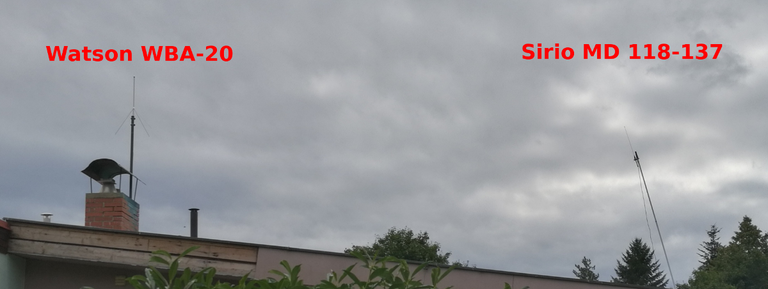
Tests
One of our interests was to find out the quality of recorded audio signals (as we want to be as close as possible to the speech observed in Cockpit / Tower) and compare the more expensive and cheaper recording setups. The comparison is made on the estimated SNR values (see previous blog post link to blog 5). It is worth to mention, that the RSP1A was also run in 8-bit mode (recording 10MHz bandwidth).
We recorded 3 days with both (more expensive RSP1A on Watson WBA-20 and cheaper RTL-SDR on Sirio MD) HW setups in parallel and then switched the antennas and recorded another 3 days (RSP1A on Sirio MD and RTL-SDR on Watson WBA-20). We conclude the experiments with the following results:
To briefly compare the lower quality (~200EUR) and the more expensive (~440EUR) HW setups, refer to the histograms below. The cheaper setup (RTL-SDR dongle with Sirio antenna) provides a SNR ~3.6dB on average while the expensive setup ~19.2dB on average. We also emphasized the amount of speech and signal in the histogram. The speech is filling about 70% of recorded audio signals.
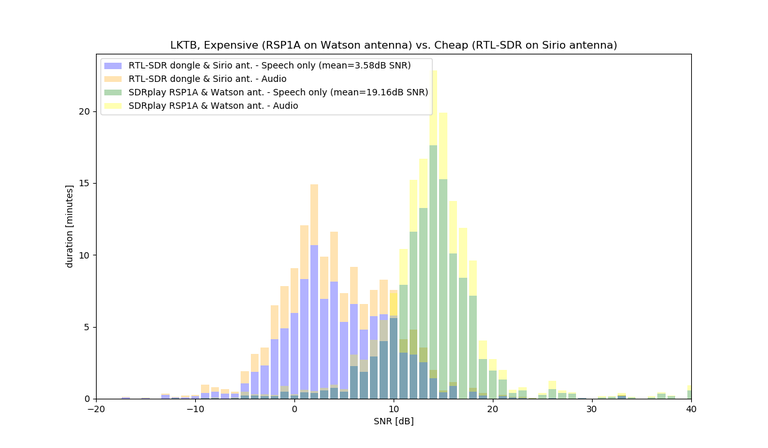
Next two histograms compare SNRs of ‘fixed’ receivers while we switch the antennas. We see that Watson antenna provides higher SNR (6 to 10dB) compared to Sirio.
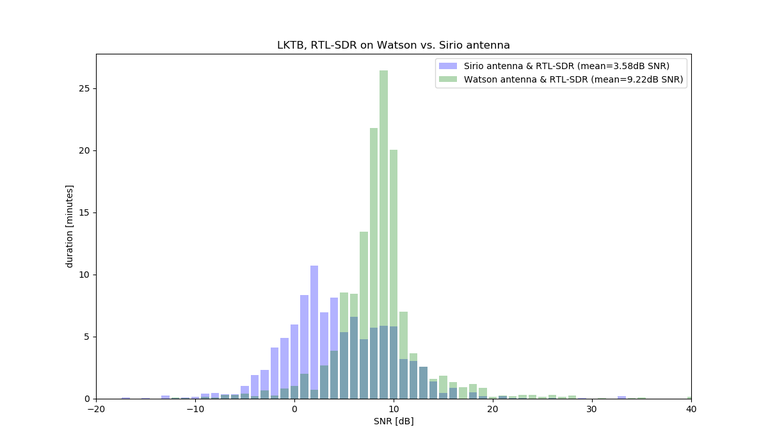
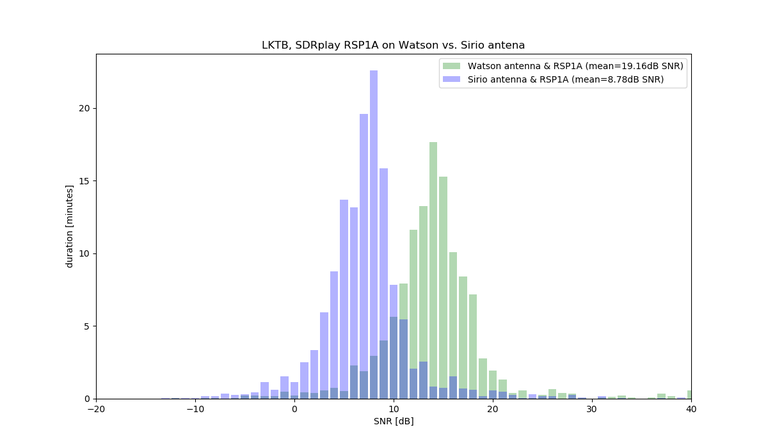
The next two histograms compare SNR with a ‘fixed’ antenna while we switch the receiver. Here we see the 4dB SNR superiority of RSP1A on the Sirio antenna and 10dB SNR superiority on the Watson antenna.
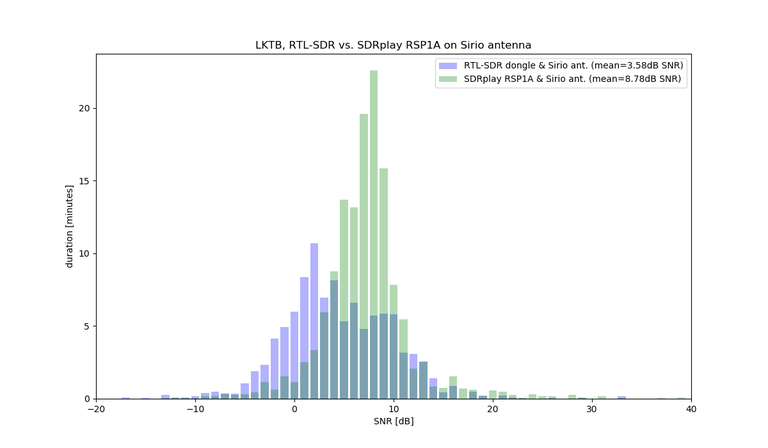
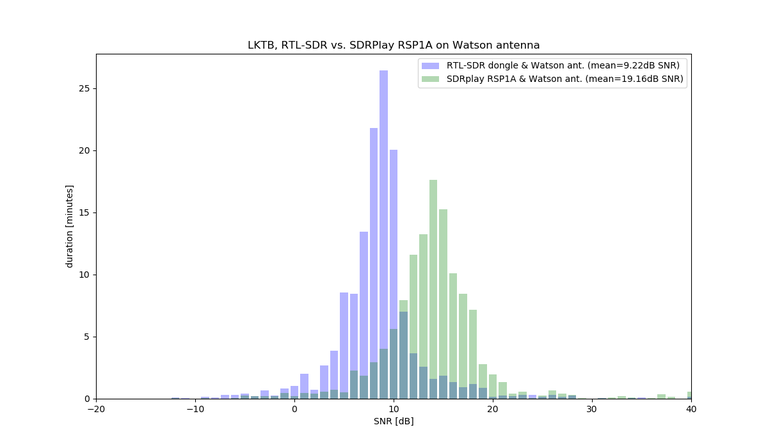
Our main conclusion is that a good antenna is important (i.e. it increases the SNR from 3.6dB to 9.2dB on average). If a good antenna is deployed, we can get even more gain in SNR from a better receiver (9.2dB to 19.2dB).
Let’s summarize mean SNRs in the following table:
mean SNR [dB] |
antenna |
||
|
Sirio MD (cheaper) |
Watson (more expensive) |
||
receiver |
RTL-SDR dongle (cheaper) |
3.58 |
9.22 |
|
SDRplay RSP1A (more expensive) |
8.78 |
19.16 |
|
